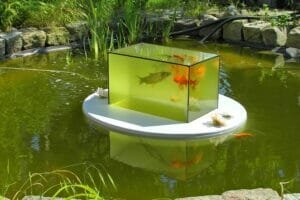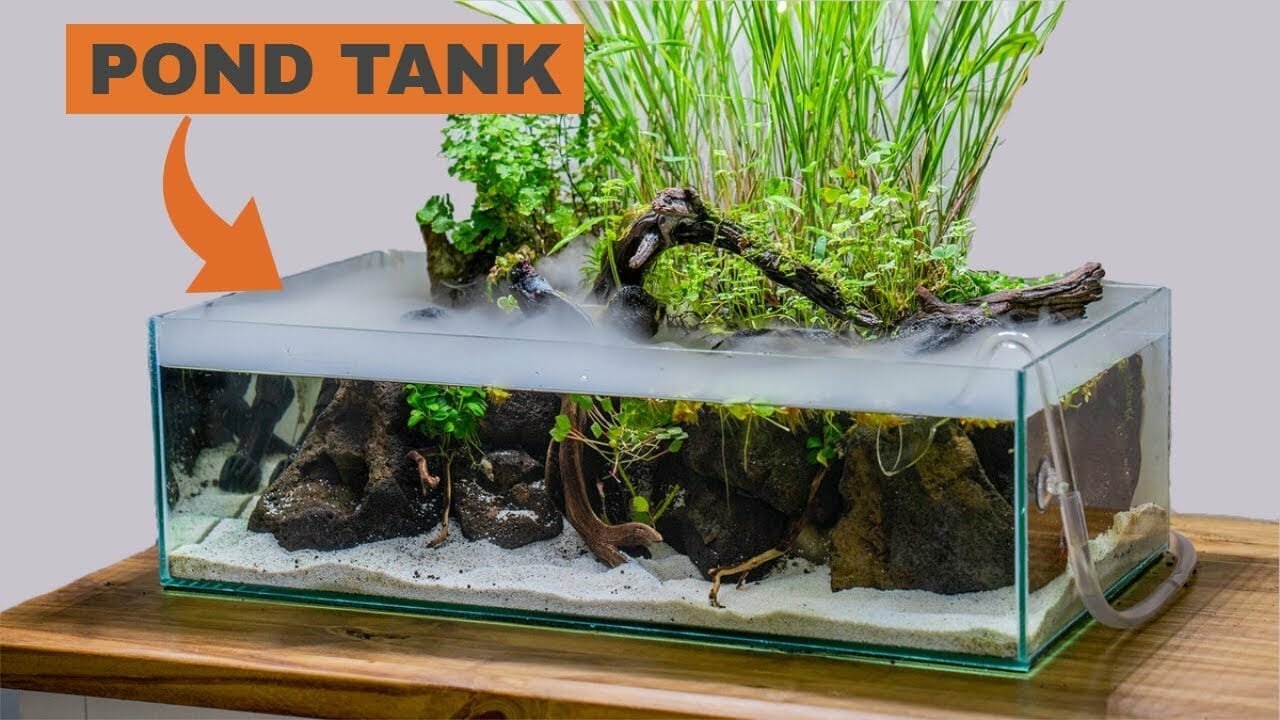For all fish hobbyists and aquarists, water testing is an essential part of keeping the aquarium or pond healthy. Why is it essential? The simple answer — “You want your fish to be healthy.” You can be feeding your fish the right amount of quality food, all the meals given are in time, and all other requirements are just apt for the pond or your aquarium.
But why are you still loosing your fishes to diseases and deaths? The answer is “WATER.” Most of us wont be able to notice the difference in water quality, although this is a major difference for the fishes. In a pond, the fishes do not live alone, rather they live in a lentic ecosystem. There are multiple other organisms living along with your fishes, similar to a reef community.
Why test the water in your pond or aquarium?

Testing the waters is an important parameter in caring about the fishes as it plays a vital role in keeping the health of your fishes in check – be it in a pond or in an aquarium. The testing allows you to determine the root cause of various or specific problems that occur in the pond or within the aquarium. A simple activity like changing the water of the aquarium can have an huge impact in the health of your fishes. The testing not only reports the problems occurring but also highlights the additional additives or equipments required for your pond and aquarium respectively.
Reasons for testing water quality of your pond and aquarium-
- pH Level – One of the most important factors of your fish’s health is the pH level of the water. For instance, the reef and marine life is more acidic in nature, suitable for the fishes. But it is not the same for freshwater fishes – the water is likely to be more alkaline. The acceptable range is around – 6.5 to 8.5 and the fishes can survive in a pond and within aquarium.
- Chlorine – Chlorine is a bad element for the fishes. You have to dechlorinate your aquarium or pond if needed. If your fishes have jerky movements, the gills have white tinge – it is an indication of chlorine in water.
- Algae growth – It is more of a nuisance activity happening throughout the area. Algae flourishes in conditions with light, nutrient, water. They spread quickly within a surrounding. The murky green water will tell you the growth of algae. Cleaning of the pond and aquarium will help you get rid of the issue.
- Ammonia – The by-product of fish waste is ammonia. This is highly toxic for fish growth as well as it’s health. You can be over feeding your fish or it can be for any other reason. The only way to detect ammonia is to test the water at regular intervals.
How often do you need to test your pond and aquarium?

The ideal intervals of regularly testing your pond an aquarium would be at every 3 months. If you have new equipments added to your aquarium, be sure to test it weekly for a few times.
What do you use to test the water
There are multiple Water Test Kits available for both pond water and aquarium.
What is an aquarium water test kit?
It is a simple test kit to test your aquarium water quality. The instructions written on the test kit are simple and can be easily followed. Test tube, color card, testing solutions are various other elements that come within the testing kit.
How do you do it?
Simply add a few drops of aquarium water along with a few drops of the testing solutions from the test kit into the test tube. Wait for a while for the solution of the color to change. After the solution has changed its color compare it with the color card to understand the result.
For beginners – “Always check the expiration date of the Fish Test Kits before you buy”
Step 1 – Take out some of the aquarium water in the test tube provided in the Aquairum Water Test Kits. You can use a disposable pipette to easily transfer the water from tank or aquarium into the test tube.
Step 2 – Take out the testing solution and add drops as mentioned in the instruction booklet into the test tube filled with aquarium or tank water. You will easily see a colored cloud bring formed as you add the testing solution. And cover the test tube with the cap.
Step 3 – You simply have to shake the test tube now lightly. This will only ensure the entire solution being mixed evenly. You will find a uniform colored solution within the test tube.
Step 4 – Match the test tube solution color with the Color card. The entire procedure will hardly take 2 minutes for each parameter being tested.
Things to note about the aquarium test kit?
The test kit is capable of testing only one parameter. You have to but separate Aquarium Water Test Kits for checking all the water parameters to analyze.
The following are the required parameters that should be checked to fully analyze and understand the quality of water yet there are multiple others as well, but to name a few –
- pH
- Ammonia
- Calcium
- Iron
- Silicate
- Copper
- Phoshate
- Carbonate hardness known as KH
- Nitrate
- Potassium
- General hardness known as GH
- Nitrite
- Iodine
- Iodide
To cover up all the bases, these parameters are mostly all that you need. The Fish Test Kit come in multiple variants such as – Saltwater, Freshwater, Pond, etc
Test Kits for Fish ponds
The entire testing procedure is similar to that of the aquarium water testing. There are various pond test kits available in the market that can conduct approximately 800 tests. The Fish Test Kits are designed and the labels are easily visible to distinguish between tank or aquarium and pond water.
Tips to maintain the health of your fish-
- Research about the adaptability of fishes within an aquarium along with the type of fish you would be purchasing. It is necessary to observe whether your fish is adapting or not. The pH level, temperature, food, oxygenation are a few of the important entities you should consider before buying one.
- Fishes can be from saltwater or freshwater. For instance, peebles can be added for freshwater fishes wheres add sand for saltwater fishes in an aquarium. Mimicking the environment for your fishes is important for adaptability and good health.
- Maintain the tank temperature as fishes are cold blooded animals. You can easily add aqua heater or water heater specifically designed for aquariums or tanks within your aquarium. Although saltwater fishes are able to endure higher temperatures than freshwater fishes.
- Removable of algae can be easily done by washing the sides of your aquarium. The algae grows in nutrient rich, light, and oxygenated areas which is an ideal condition for your fishes to thrive. The growth of algae can reduce the oxygen level available to the fishes in the aquarium.
- Checking the water filter regularly to ensure accurate filtering. Maintaining the fish number with the size of the water filter.
- You can easily change the water every week. Dont change the entire water at once, take out 1/5th of the water and add fresh water accurately. Addition of entirely new freshwater will severely affect the temperature of the tank or aquarium. Also pH level should be in consideration.
- Overfeeding your fish is a big NO. The uneaten food starts decaying and becomes waste in the pond which can be toxic to the fishes.
- Proper pump filtration should be done to filter out the debris of the pond.
- Creating balance between plants and fishes is important. Too many plants can deprive the fishes of oxygen. The plants create shade during hot summer which helps the water to remain at a cooler temperature.
- Removing dead leaves, waste, bacteria is important. These are debris that cause harm to the fishes and the aquatic life. Floating weeds can also cause harm.
- Frogs keep the insects at an arm’s length. You dont have to buy frogs, where there is aquatic life, frog will follow.
- Changing of the water level is needed during hot summers to prevent pond weathering, this in turn can cause less oxygenation
- You can add fountains in your pond to increase oxygenation as well. Water conditioner can help in breaking various bacterias needed for right environment of the aquarium life.
- Air pump promotes gas exchange between water and air. Water oxygenation is vital for fishes to breather. It also helps in regulating the temperature evenly within the container.
- Adequate lighting in multiple shapes, sizes, appearances are available in the market. You can easily choose one for your aquarium.
- Keep plastic, non soapy pad to remove algae from the body of the aquarium. Make sure not to scratch the sides of container to leak elements into the water.
- Keep Fish Test Kits for measuring pH, ammonia, etc concentrations.
- Bucket for water changing is a must to provide healthy environment for your fishes. You can also choose from multiple options of aquarium tank hardwares to decorate your aquarium.
Now that you have a handful of tips and a list of do’s and dont’s, go ahead with purchasing the pet fish you always wanted or the fish pond you want to cultivate.
